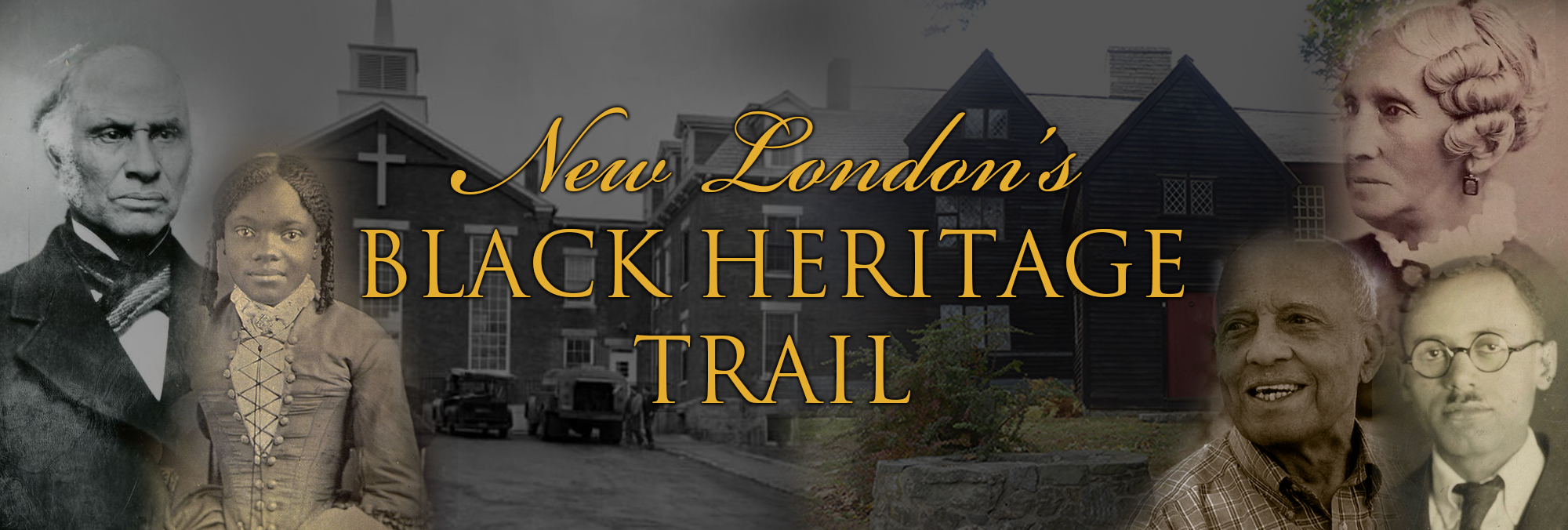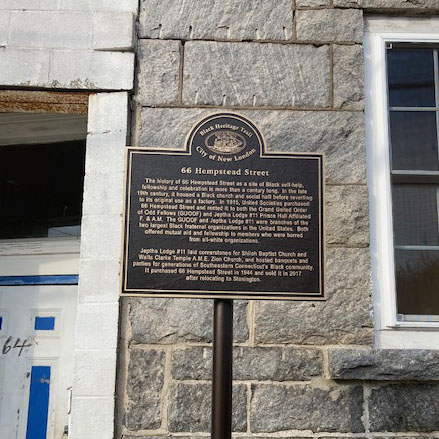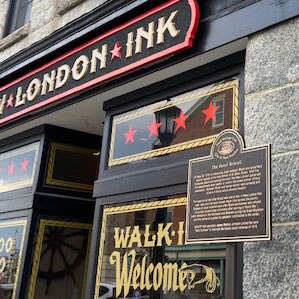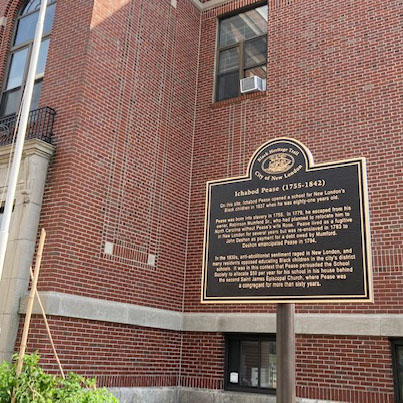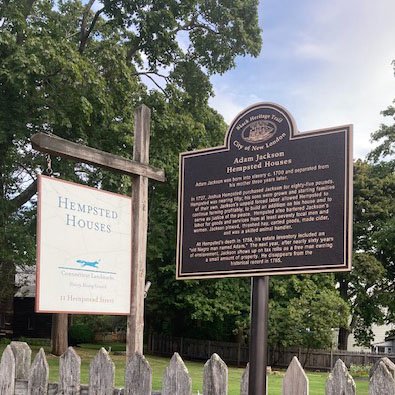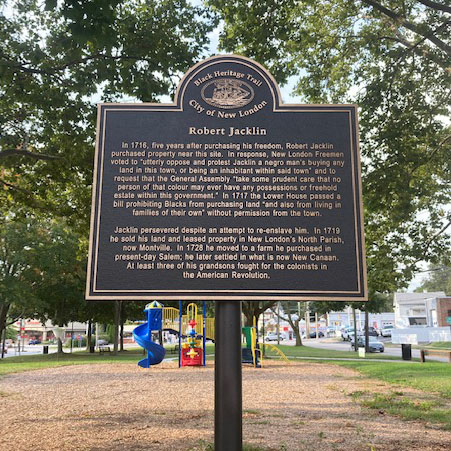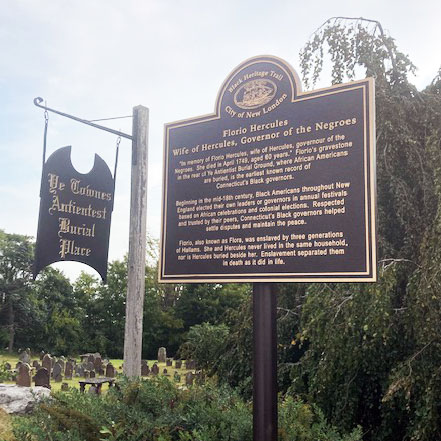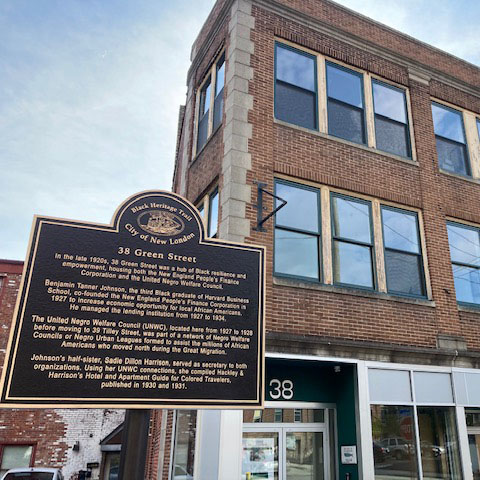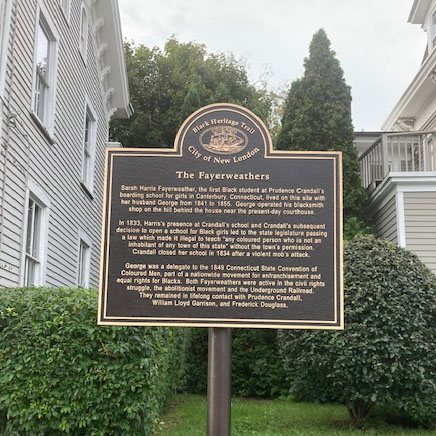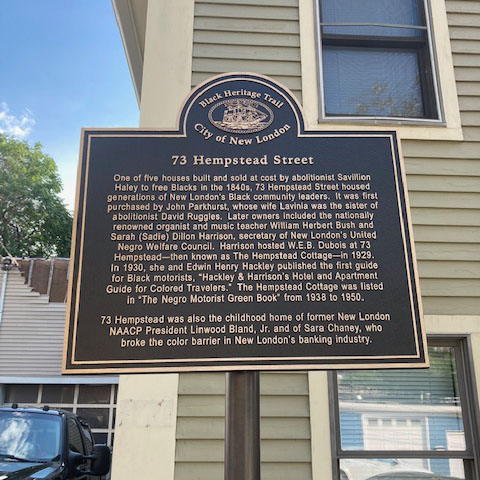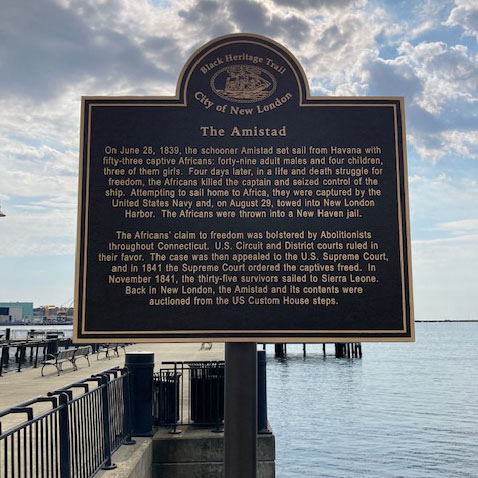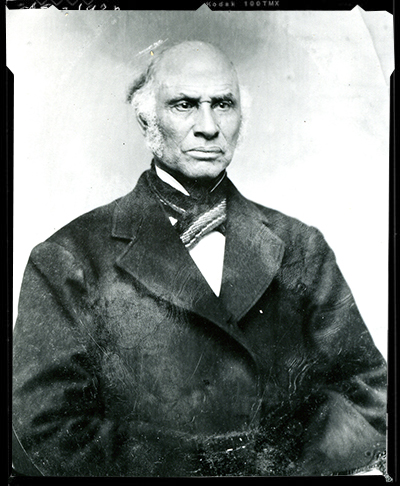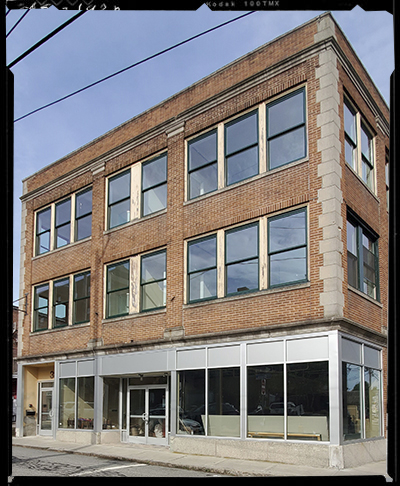New London’s Black Heritage Trail celebrates three centuries of Black strength, resilience, and accomplishment. Some of the trail’s fifteen sites explore nationally known people or incidents. Others honor people who have been nearly forgotten. Nearly all describe the determination with which New London’s Black community overcame obstacles through personal courage and by founding institutions to meet its social, political, economic and spiritual needs. Together, the sites tell a story about Black life in New London while tying into larger stories about enslavement, the Great Migration and the struggle for civil rights.
New London’s Black Heritage Trail
DISCOVER OUR RICH HISTORY
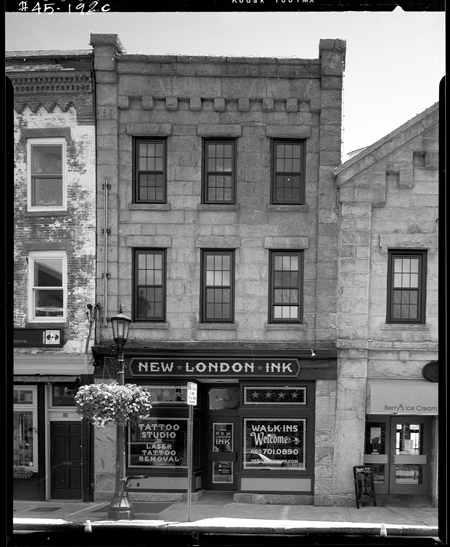
The Hotel Bristol
90 Bank Street
On May 29, 1919, an hours-long brawl between Black and white Navy sailors erupted at the Hotel Bristol at 92 Bank Street. With five thousand people surrounding the hotel, the New London Police and Fire Departments were unable to control the crowd without military assistance. Between fifteen and twenty sailors were arrested and dozens of Black sailors severely beaten.
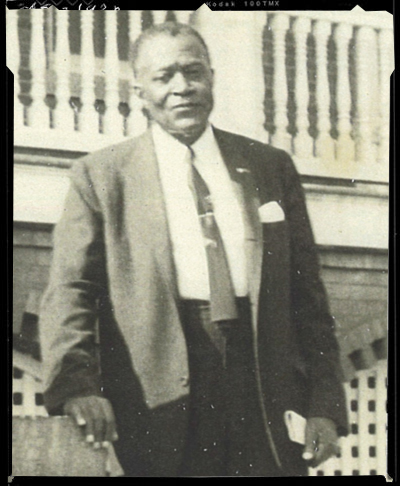
Shiloh Baptist Church
1 Garvin Street
Shiloh Baptist Church is New London’s oldest historically Black church. Founded in 1894, its roots go back to the 1880s, when worshippers gathered in storefronts, homes and meeting halls, including 66 Hempstead Street. The church moved into a newly constructed church on High Street in 1905.

The Hotel Bristol
90 Bank Street
On May 29, 1919, an hours-long brawl between Black and white Navy sailors erupted at the Hotel Bristol at 92 Bank Street. With five thousand people surrounding the hotel, the New London Police and Fire Departments were unable to control the crowd without military assistance. Between fifteen and twenty sailors were arrested and dozens of Black sailors severely beaten.

Shiloh Baptist Church
1 Garvin Street
Shiloh Baptist Church is New London’s oldest historically Black church. Founded in 1894, its roots go back to the 1880s, when worshippers gathered in storefronts, homes and meeting halls, including 66 Hempstead Street. The church moved into a newly constructed church on High Street in 1905.
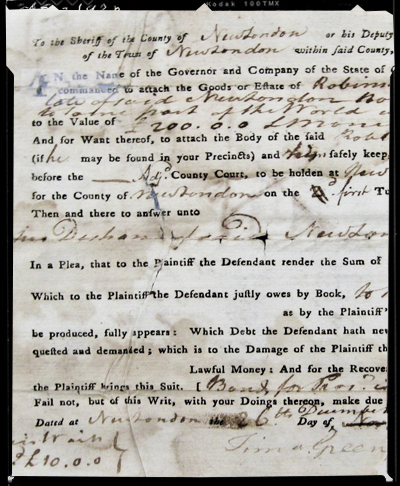
Ichabod Pease
111 Union Street
On this site, Ichabod Pease opened a school for New London’s Black children in 1837 when he was eighty-one years old. Pease was born into slavery in 1755. In 1779, he escaped from his owner, Robinson Mumford Sr., who had planned to relocate him to North Carolina without Pease’s wife Rose.
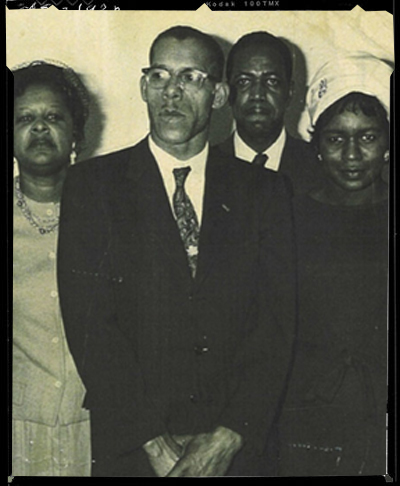
Linwood Bland, Jr.
23 Franklin Street
Civil rights leader Linwood Bland, Jr. moved to New London from North Carolina as a child in 1935. He was a charter member of the New London NAACP and was elected president in 1962, serving until 1968 . He fought discrimination by pushing for structural change and by advocating for people who had been denied housing or employment. His efforts helped integrate New London’s banking industry and widened opportunities for Black workers at Electric Boat.

Ichabod Pease
111 Union Street
On this site, Ichabod Pease opened a school for New London’s Black children in 1837 when he was eighty-one years old. Pease was born into slavery in 1755. In 1779, he escaped from his owner, Robinson Mumford Sr., who had planned to relocate him to North Carolina without Pease’s wife Rose.

Linwood Bland, Jr.
23 Franklin Street
Civil rights leader Linwood Bland, Jr. moved to New London from North Carolina as a child in 1935. He was a charter member of the New London NAACP and was elected president in 1962, serving until 1968 . He fought discrimination by pushing for structural change and by advocating for people who had been denied housing or employment. His efforts helped integrate New London’s banking industry and widened opportunities for Black workers at Electric Boat.
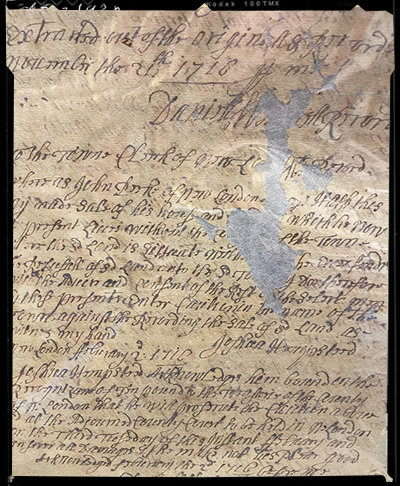
Robert Jacklin
Mahan Park, Vauxhall Street
In 1716, five years after purchasing his freedom, Robert Jacklin purchased property at this site. In response, New London Freemen voted to “utterly oppose and protest Jacklin a negro man’s buying any land in this town, or being an inhabitant within said town” and to request that the General Assembly “take some prudent care that no person of that colour may ever have any possessions or freehold estate within this government.”
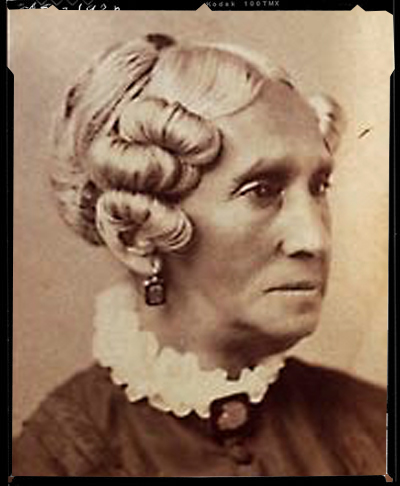
The Fayerweathers
90 Broad Street
Sarah Harris Fayerweather, the first Black student at Prudence Crandall’s boarding school for girls in Canterbury, Connecticut, lived on this site with her husband George from 1841 to 1855. George operated his blacksmith shop on the hill behind the house near the present-day courthouse.

Robert Jacklin
Mahan Park, Vauxhall Street
In 1716, five years after purchasing his freedom, Robert Jacklin purchased property at this site. In response, New London Freemen voted to “utterly oppose and protest Jacklin a negro man’s buying any land in this town, or being an inhabitant within said town” and to request that the General Assembly “take some prudent care that no person of that colour may ever have any possessions or freehold estate within this government.”

The Fayerweathers
90 Broad Street
Sarah Harris Fayerweather, the first Black student at Prudence Crandall’s boarding school for girls in Canterbury, Connecticut, lived on this site with her husband George from 1841 to 1855. George operated his blacksmith shop on the hill behind the house near the present-day courthouse.

Adam Jackson
11 Hempstead Street
Adam Jackson was born into slavery c.1700 and separated from his mother three years later. In 1727, Joshua Hempsted purchased Jackson for eighty-five pounds. Hempsted was nearing fifty; his sons were grown and starting families of their own. Jackson’s forced labor allowed Hempstead to continue farming profitably, to build an addition on his house and to serve as justice of the peace.
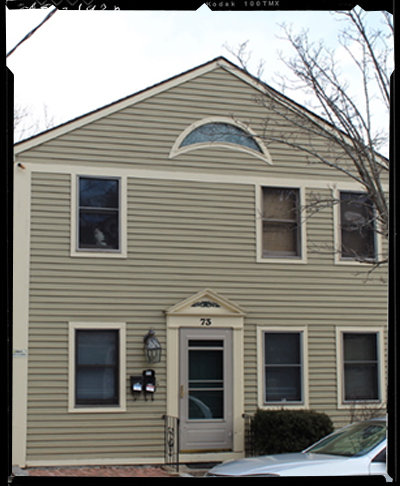
73 Hempstead Street
One of five houses built and sold at cost by abolitionist Savillion Haley to free Blacks in the 1840s, 73 Hempstead Street housed generations of New London’s Black community leaders. It was first purchased by John Parkhurst, whose wife Lavinia was the sister of abolitionist David Ruggles.

Adam Jackson
11 Hempstead Street
Adam Jackson was born into slavery c.1700 and separated from his mother three years later. In 1727, Joshua Hempsted purchased Jackson for eighty-five pounds. Hempsted was nearing fifty; his sons were grown and starting families of their own. Jackson’s forced labor allowed Hempstead to continue farming profitably, to build an addition on his house and to serve as justice of the peace.

73 Hempstead Street
One of five houses built and sold at cost by abolitionist Savillion Haley to free Blacks in the 1840s, 73 Hempstead Street housed generations of New London’s Black community leaders. It was first purchased by John Parkhurst, whose wife Lavinia was the sister of abolitionist David Ruggles.
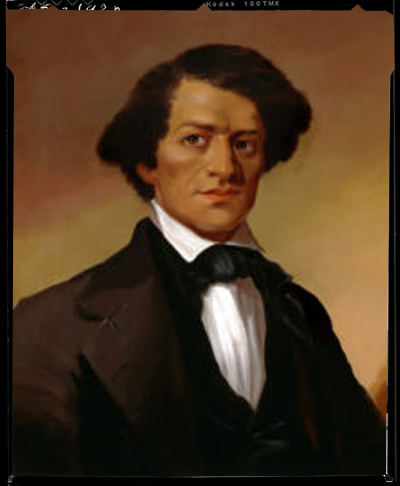
Frederick Douglass and Dart’s Hall
2 Atlantic Street
On May 20 and 21, 1848, ten years after his self-emancipation from slavery, the noted abolitionist and orator Frederick Douglass gave a series of four lectures on this site in New London at Dart’s Hall. The content of those lectures has been lost to history, but on May 9, 1848 at the American Anti-Slavery Society meeting in New York, Douglass had given a lecture entitled “We Have Decided to Stay,” voicing his opposition to the American Colonization Society’s proposal for African-American emigration to Liberia.
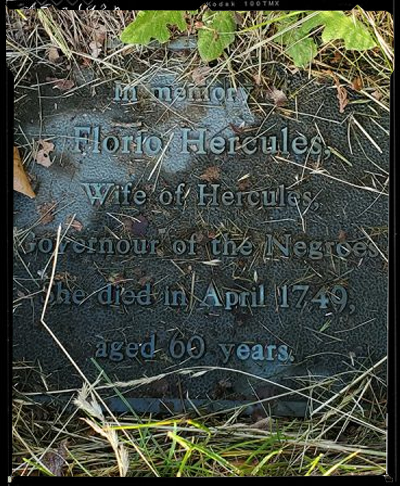
Florio Hercules
1 Bulkeley Place
“In memory of Florio Hercules, wife of Hercules, governour of the Negroes. She died in April 1749, aged 60 years.” Florio’s gravestone in the rear of Ye Antientist Burial Ground, where African Americans are buried, is the earliest known record of Connecticut’s Black governors.

Frederick Douglass and Dart’s Hall
2 Atlantic Street
On May 20 and 21, 1848, ten years after his self-emancipation from slavery, the noted abolitionist and orator Frederick Douglass gave a series of four lectures on this site in New London at Dart’s Hall. The content of those lectures has been lost to history, but on May 9, 1848 at the American Anti-Slavery Society meeting in New York, Douglass had given a lecture entitled “We Have Decided to Stay,” voicing his opposition to the American Colonization Society’s proposal for African-American emigration to Liberia.

Florio Hercules
1 Bulkeley Place
“In memory of Florio Hercules, wife of Hercules, governour of the Negroes. She died in April 1749, aged 60 years.” Florio’s gravestone in the rear of Ye Antientist Burial Ground, where African Americans are buried, is the earliest known record of Connecticut’s Black governors.
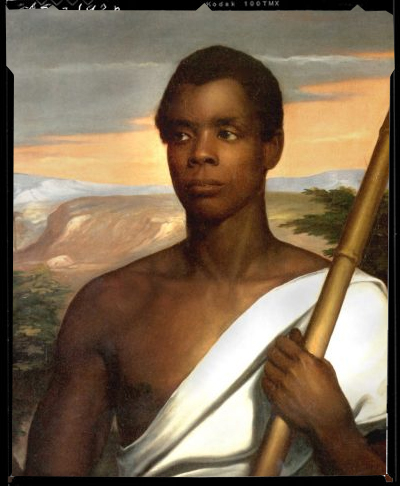
The Amistad Rebellion
Amistad Pier entrance, waterfront park
On June 28, 1839, the schooner Amistad set sail from Havana with fifty-three captive Africans: forty-nine adult males and four children, three of them girls. Four days later, in a life and death struggle for freedom, the Africans killed the captain and seized control of the ship. Attempting to sail home to Africa, they were captured by the United States Navy and, on August 29, towed into New London Harbor. The Africans were thrown into a New Haven jail.
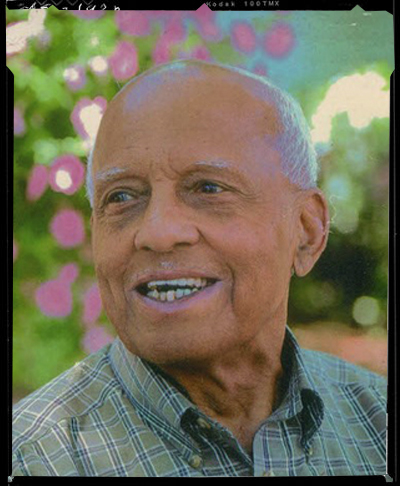
Spencer C. Lancaster
42 Rogers Street
In 1960, one hundred and seventy-six years after New London’s incorporation, civil rights activist Spencer C. Lancaster became New London’s first Black elected official. Lancaster served two terms on the board of selectmen before becoming New London’s first Black candidate for city council in 1964.

The Amistad Rebellion
Amistad Pier entrance, waterfront park
On June 28, 1839, the schooner Amistad set sail from Havana with fifty-three captive Africans: forty-nine adult males and four children, three of them girls. Four days later, in a life and death struggle for freedom, the Africans killed the captain and seized control of the ship. Attempting to sail home to Africa, they were captured by the United States Navy and, on August 29, towed into New London Harbor. The Africans were thrown into a New Haven jail.

Spencer C. Lancaster
42 Rogers Street
In 1960, one hundred and seventy-six years after New London’s incorporation, civil rights activist Spencer C. Lancaster became New London’s first Black elected official. Lancaster served two terms on the board of selectmen before becoming New London’s first Black candidate for city council in 1964.
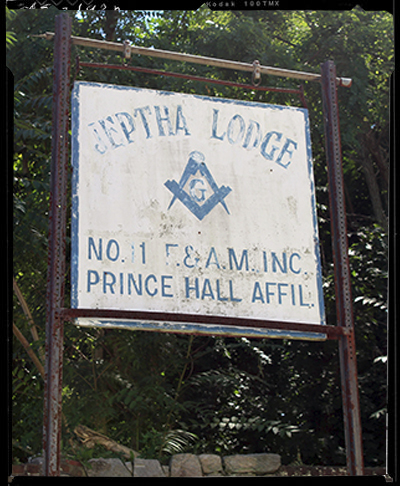
66 Hempstead Street
The history of 66 Hempstead Street as a site of Black self-help, fellowship and celebration is more than a century long. In the late 19th century, it housed a Black church and social hall before reverting to its original use as a factory. In 1915, United Societies purchased 66 Hempstead Street and rented it to both the Grand United Order of Odd Fellows (GUOOF) and Jeptha Lodge #11 Prince Hall Affiliated F. & A.M.
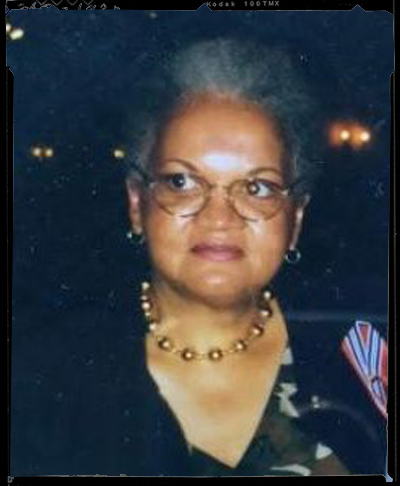
Sara Chaney
Sara Travis Chaney was born in Savannah, Georgia in 1935. When she was about five, her family moved from Savannah to New York City, where she attended and graduated from parochial school. Her life was shaped by the lessons she learned from her mother and grandparents, people of strong moral character and faith.

66 Hempstead Street
The history of 66 Hempstead Street as a site of Black self-help, fellowship and celebration is more than a century long. In the late 19th century, it housed a Black church and social hall before reverting to its original use as a factory. In 1915, United Societies purchased 66 Hempstead Street and rented it to both the Grand United Order of Odd Fellows (GUOOF) and Jeptha Lodge #11 Prince Hall Affiliated F. & A.M.

Sara Chaney
Sara Travis Chaney was born in Savannah, Georgia in 1935. When she was about five, her family moved from Savannah to New York City, where she attended and graduated from parochial school. Her life was shaped by the lessons she learned from her mother and grandparents, people of strong moral character and faith.
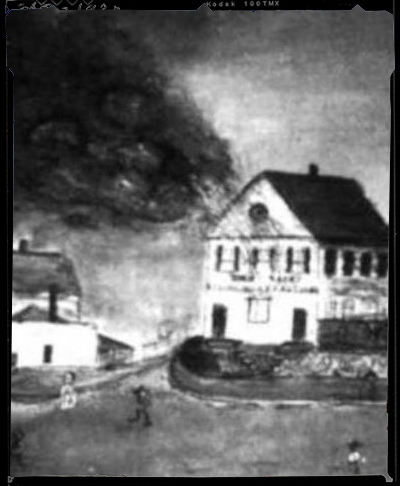
Preston Hamilton
Preston Hamilton was born in 1830 in Richmond, Virginia. His mother was a free woman of Native American and Black ancestry. His father was enslaved until Asa Otis, a merchant who had moved to Virginia from New London, purchased him and allowed him to work off his freedom for a nominal fee.1 According to his obituary, Hamilton inherited his mother’s status as a free person and was never enslaved.
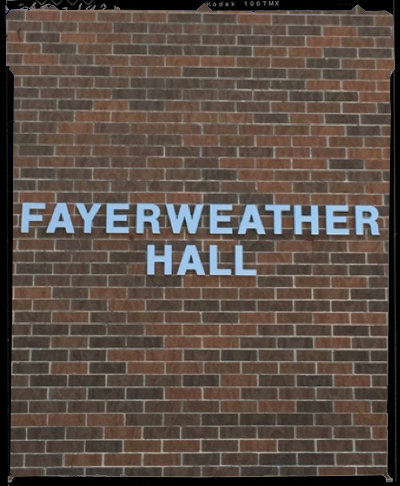
William & Celinda Harris Anderson
The corner of Shapley and Huntington Street was a silent witness to nearly every phase of New London’s history, from the town’s founding, the prosperity of the West Indies Trade and the turmoil of revolution; through slavery, emancipation, civil war, and, finally, abolition; through Reconstruction, Jim Crow, the Great Migration, and the devastating impact of urban renewal.

Preston Hamilton
Preston Hamilton was born in 1830 in Richmond, Virginia. His mother was a free woman of Native American and Black ancestry. His father was enslaved until Asa Otis, a merchant who had moved to Virginia from New London, purchased him and allowed him to work off his freedom for a nominal fee.1 According to his obituary, Hamilton inherited his mother’s status as a free person and was never enslaved.

William & Celinda Harris Anderson
The corner of Shapley and Huntington Street was a silent witness to nearly every phase of New London’s history, from the town’s founding, the prosperity of the West Indies Trade and the turmoil of revolution; through slavery, emancipation, civil war, and, finally, abolition; through Reconstruction, Jim Crow, the Great Migration, and the devastating impact of urban renewal.
IN THE NEWS
‘Black and brown history has to be relevant’ | Black History Trail opens in New London – Fox 61
New London’s new Black Heritage Trail celebrates a dynamic history that’s seldom taught – WSHU Radio
New London to unveil Black Heritage Trail – NBC Connecticut
Lancaster a living reminder of rich Black history in New London
New London poised to unveil Black Heritage Trail
New London, Mystic and more get funding for tourism initiatives
The New London community is proud to share the stories of our black heritage. The Black Heritage Trail is made possible through the tireless efforts of a core volunteer committee that includes Councilman Curtis K. Goodwin, New London Landmarks, New London Office of Development and Planning (ODP), and New London City Council Economic Development Committee. Grant funding was provided, in part, by Thames River Innovation Place and the State of Connecticut Office of Tourism, and the Eastern Regional Tourism District. For more information, please contact New London Landmarks at director@newlondonlandmarks.

